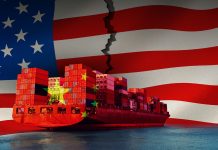There’s growing chatter that China may soon overtake the United States not merely in headline breakthroughs but in practical leadership in artificial intelligence. What would it take for China to go from trailing in some technical dimensions to pulling ahead in influence, infrastructure, economics—and possibly even in global AI norms? Drawing on recent developments, here’s a look at how that scenario might just come into view.
Building a Sovereign AI Ecosystem
One of China’s strongest levers is its resolute push toward technological self-sufficiency. Spurred by export restrictions and geopolitical friction, Beijing has accelerated efforts to reduce foreign dependency in critical areas like advanced chips, data infrastructure, and compute power. For instance, China Unicom has increased its capital expenditure for computing power by nearly 30% in 2025. South China Morning Post
Meanwhile, major cloud and AI firms—Alibaba Cloud, Huawei Cloud, ByteDance’s Volcano Engine—are expanding infrastructure rapidly, especially generative AI Infrastructure-as-a-Service (IaaS). Spending is forecast to quadruple from roughly RMB 10.68 billion in 2024 to about RMB 40.87 billion by 2029. In hardware, domestic chipmakers like Cambricon, Biren Technology, Black Sesame, Huawei’s units, and others are aggressively scaling up production of AI accelerators. In some cases, China aims to triple AI chip output by 2026 to replace “China-compliant” imports and foreign chips under export restrictions.
Massive Infrastructure, Faster Adoption
Infrastructure has always been a slow build, but China is sprinting. Its “Eastern Data, Western Compute” strategy channels computing resources (cloud & AI-training clusters) to regions where land and power are more plentiful, sometimes climate-favourable too.
Projects are being deployed across western provinces, including areas with renewable energy, suitable climate for cooling, and lower real estate costs. This not only boosts scale but also lowers operating costs for energy and cooling, which are nontrivial in large data centres.
Adoption is also being institutionalised. Chinese government policy mandates adoption of AI in many sectors—manufacturing, healthcare, public safety, transportation. AI-plus-manufacturing integration, for example, is being pushed so that major Chinese manufacturers adopt AI systems for predictive maintenance, autonomous controls, etc.
Talent, Regulation & Data Governance
Another advantage for China is its large, increasingly AI-focused talent pool. Universities, private labs, and returning diaspora researchers are adding depth. There is strong government support for scholarships, grants, and industrial partnerships. Research output has surged, both in quantity and in many measures of quality.
China has also made early moves to put in place national data governance infrastructure. The establishment of bodies like the National Data Administration, regulation of cross-border data flows, and policies to regard data as a strategic asset are all part of a deliberate framework to ensure China controls key inputs for AI.
Regulations around generative AI, safety, and core technology are also being developed. Policy risks are real, but China’s centralized system allows for more coherent, top-down planning, which can accelerate deployment once frameworks are in place.
Challenges & Bottlenecks
None of this is guaranteed to succeed, however. There are several structural, technical, and economic challenges that China must manage to truly pull ahead.
One major bottleneck is advanced chip fabrication. Especially lithography equipment: EUV and DUV tools remain heavily controlled, and China lags in making high-end lithography systems domestically. Firstpost
Memory supply is another issue: high-bandwidth memory (HBM) is crucial for many modern AI architectures. China has built up HBM stockpiles, but these are finite and subject to export restrictions. Domestic suppliers are stepping up, but currently they are smaller scale than global leaders. Tom’s Hardware+1
Another challenge is the tension between regulation and innovation. Strict state-led oversight may help with stability, safety, and alignment with national objectives, but it can also slow experimentation, limit open research, or create compliance costs. Balancing speed with security is hard.
Finally, international export controls remain a serious hurdle: U.S. and allied restrictions on GPUs, chipmaking equipment, and AI algorithms/intellectual property still affect the flow of technology and tools that China needs to advance.
Strategic Opportunities
Given its advantages, China has several strategic pathways by which it could pull ahead—or at least narrow the gap dramatically.
-
Localized Innovation & Efficiency: Rather than trying to simply replicate U.S. giant models or compete node-for-node in raw scale, China can focus on making AI more efficient, optimizing for local needs, smaller models, edge applications, and energy efficiency. There are reports that some local models perform well in specific tasks with lower compute cost.
-
Sovereign compute & “AI Stack”: Building full stack from hardware to software, from data storage, frameworks, chips, control, deployment in industry. With platforms like PaddlePaddle and MindSpore, domestic software frameworks are getting stronger. If models, chips, and infrastructure all align under strong national policy, China could avoid dependency and accelerate iterated improvements.
-
Rapid Deployment & Use-Case Depth: China’s willingness to deploy AI broadly (public sector, city planning, health, education) gives it real world feedback loops. Tests, failures, iteration at scale can drive improvements faster than purely competitive feature races.
-
Policy Consistency: With centralized coordination and strong state funds, China can push long-term projects without needing to manage as many competing private stakeholder pressures as in more market-driven systems. This helps for infrastructure that requires years of investment.
Implications if China Pulls Ahead
If China manages to pull ahead meaningfully in AI, it would reshape not just tech markets but geopolitics, trade, norms, and global governance.
-
Standard setting: China might set the tone for AI regulations globally, especially among countries watching China’s model of AI with strong state oversight.
-
Tech supply chains: More reliance on Chinese chips, software, frameworks. Export restriction regimes could tighten, and competing countries might create alternate ecosystems.
-
Economic spillovers: Productivity gains, new industries, AI-enabled manufacturing and services could help China’s growth at a time when its labour cost advantages are eroding.
-
Competition in AI safety and ethics: If China leads, its values—around data privacy, regulation, censorship, state control—could influence what is considered acceptable, especially among aligned or dependent nations.
What to Watch
To gauge whether China is on track to pull ahead, keep an eye on:
-
Progress in chip node advancement, especially domestic lithography and HBM capacity.
-
Usage metrics: how many factories, businesses, public services are using AI in production vs pilot projects.
-
Talent flows: how many top researchers, engineers, PhD holders are staying in China or returning, how many global open research contributions are emerging.
-
Regulation and international responses: how export controls evolve, trade restrictions, how China’s AI governance is perceived globally.
-
Innovation in models: efficiency, localization, open source, cultural & language adaptation. A breakthrough may come not from scaling bigger, but from doing more with less.
Final Word
China has positioned many of the chess pieces—policy, infrastructure, capital, and ambition—for a serious push in the AI race. But being “first” isn’t always about raw power; often it’s about consistency, adaptability, ethical framing, and how well you integrate tech into every layer of society.
If China succeeds in harnessing its strengths while overcoming its technical pinch points, its moment as a leading AI power may not be far off—and the world may increasingly find itself contending with a dual-leadership paradigm, where U.S. and China chart different but overlapping paths to the future of intelligence.









































